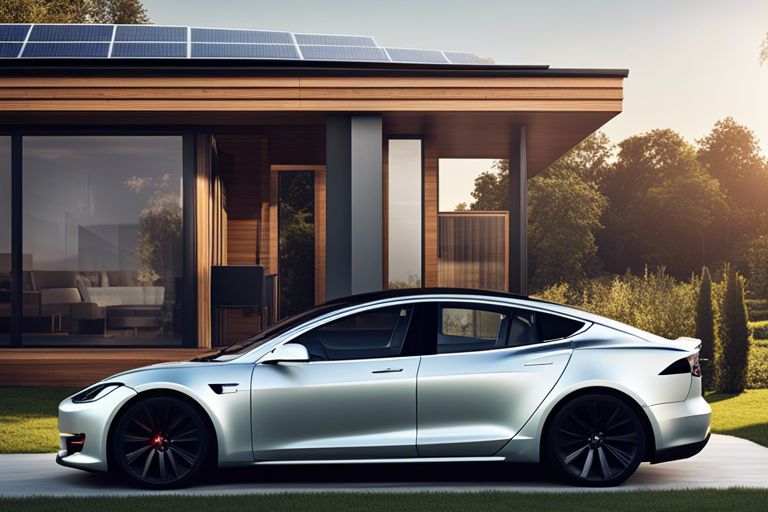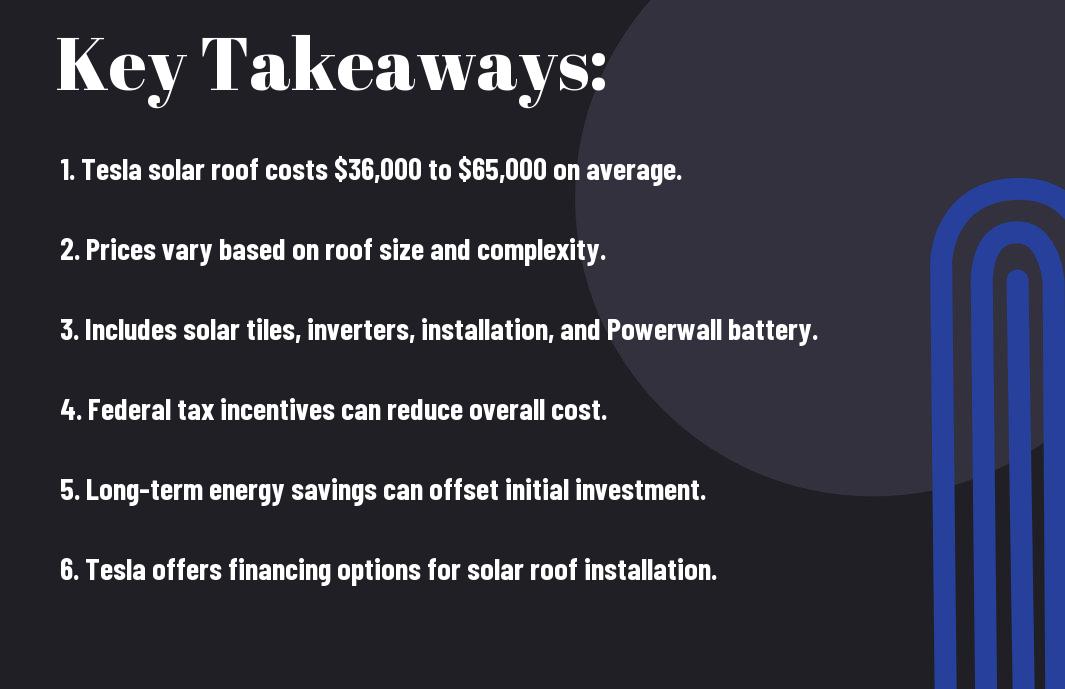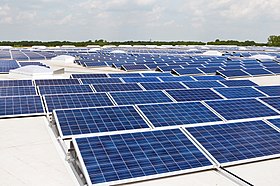Overwhelmed by the idea of investing in a solar roof? Whether you’re considering going green or simply looking to save on your energy bills, the decision to install a solar roof is not one to take lightly. Let’s explore the advantages and drawbacks so you can make an informed choice that fits your needs and goals. Your journey to a more sustainable energy future starts here!
Key Takeaways:
- Long-term cost savings: Investing in a solar roof can lead to substantial savings on electricity bills over time, as you generate your own clean energy.
- Environmental benefits: By using solar power, you reduce your carbon footprint and contribute to a more sustainable future for the planet.
- Increase in property value: A solar roof can increase the resale value of your home, making it an attractive feature for potential buyers.
The Benefits of Solar Roofs
Environmental Advantages
While the primary benefit of solar roofs is the ability to harness the power of the sun to generate electricity for your home, there are also several environmental advantages to consider. By installing a solar roof, you are reducing your reliance on fossil fuels, which helps decrease harmful greenhouse gas emissions that contribute to climate change. Additionally, solar energy is a renewable resource, unlike coal or oil, which means it will never run out.
Financial Incentives
On top of the environmental benefits, there are numerous financial incentives to installing a solar roof. In many places, you can take advantage of tax credits, rebates, and other incentives offered by the government to offset the initial cost of installation. Some utility companies even offer net metering programs, allowing you to sell excess electricity generated by your solar roof back to the grid, potentially earning you money in the long run.
Furthermore, with the advancement of technology and increasing demand for sustainable energy sources, the cost of solar panels has significantly decreased in recent years. This makes investing in a solar roof a more financially attractive option than ever before.
Benefits from installing a solar roof go beyond just saving on your electricity bills. By reducing your carbon footprint, taking advantage of financial incentives, and contributing to the growth of renewable energy sources, you not only benefit yourself but also help create a more sustainable future for generations to come.
The Drawbacks of Solar Roofs
High Upfront Costs
Costs can be a significant drawback when considering a solar roof. Installing a solar roof involves a substantial upfront investment for equipment, labor, and permits. While there are rebates and incentives available to help offset some of these costs, the initial outlay can still be a barrier for many homeowners. You may need to carefully weigh the upfront expenses against the long-term savings on energy bills to determine if a solar roof is worth it for you.
Intermittent Energy Source
The nature of solar power being dependent on sunlight means that it is an intermittent energy source. This means that solar panels only generate electricity during daylight hours and may not produce energy during cloudy days or at night. To ensure a constant power supply, you may need to invest in additional energy storage solutions like batteries, which can add to the overall costs of a solar roof.
The intermittency of solar power also raises the issue of grid dependence during times when your solar panels are not producing electricity. You may need to rely on traditional grid power during these periods, which can diminish the environmental benefits and cost savings you were hoping to achieve with your solar roof.
Assessing Your Energy Needs
Keep The Pros and Cons of Solar Panels: Are They Worth It? in mind when assessing if a solar roof is worth it for you. Evaluating your energy consumption is the first step in determining the potential benefits of a solar roof for your home.
Evaluating Your Energy Consumption
An imperative aspect of deciding if a solar roof is worth it for you is understanding how much energy your household consumes on average. By analyzing your utility bills and considering your daily energy usage habits, you can estimate the size of the solar system needed to meet your electricity needs effectively.
Determining Your Roof’s Suitability
One crucial factor in determining if a solar roof is a viable option for your home is evaluating your roof’s suitability for solar panel installation. Factors such as the age, orientation, and shading of your roof will impact the efficiency of a solar system. In addition, the structural integrity of your roof must be assessed to ensure it can support the weight of solar panels.
Determining the feasibility of a solar roof involves considering various factors, including your energy consumption patterns and the condition of your roof. By evaluating these aspects carefully, you can make an informed decision about whether investing in a solar roof is worth it for your home.
Comparing Solar Roofs to Traditional Solar Panels
Once again, let’s research into the comparison of solar roofs and traditional solar panels. Below is a breakdown of key factors to consider when deciding between the two options:
| Space and Aesthetics | Energy Efficiency and Output |
Space and AestheticsFor space and aesthetics, solar roofs offer a sleek and integrated look for your home. They blend seamlessly into the roof, appearing like regular roofing tiles. This can enhance the overall appearance of your property without the need for bulky panels. |
Energy Efficiency and OutputOn the other hand, when it comes to energy efficiency and output, traditional solar panels are known to be slightly more efficient in terms of energy production. This is because they can be angled for optimal sun exposure, whereas solar roofs are limited by the angle of your roof. |
Efficiency-wise, traditional solar panels may have a slight edge over solar roofs due to their ability to be positioned at the optimum angle for sunlight exposure. This can result in higher energy output over time with traditional panels compared to solar roof tiles.
The Future of Solar Roofs
After considering the benefits and drawbacks of installing a solar roof on your home, it’s necessary to look towards the future of this technology. Advancements in technology, growing demand, and industry trends all play a significant role in shaping the future of solar roofs.
Advancements in Technology
An exciting aspect of the future of solar roofs is the constant advancements in technology. Solar panel efficiency continues to improve, allowing for smaller, more powerful panels that can generate more electricity. Battery storage technology is also evolving, enabling you to store excess energy generated during the day for use at night or on cloudy days. These technological advancements not only make solar roofs more efficient but also more cost-effective in the long run.
Growing Demand and Industry Trends
Demand for solar roofs is on the rise as more homeowners like you are becoming environmentally conscious and looking for ways to reduce their carbon footprint. Additionally, the increasing costs of traditional energy sources make solar energy an attractive alternative. Industry trends show that more companies are entering the market, driving competition and innovation. This competition leads to better products, improved installation processes, and ultimately, more affordable options for you.
As the demand for sustainable energy solutions continues to grow, the solar roof industry is poised for significant growth. With advancements in technology and a shift towards renewable energy sources, choosing a solar roof for your home could be a wise investment for the future.
Real-World Examples and Success Stories
Residential Installations
Stories of homeowners going solar are becoming increasingly common. One such success story is the Smith family, who decided to invest in a solar roof for their home last year. By harnessing the power of the sun, they were able to significantly reduce their electricity bills and even generate surplus energy that they could sell back to the grid. With the help of government incentives and financing options, the Smiths found that their solar roof not only paid for itself but also added value to their property.
Commercial Applications
Applications of solar roofs aren’t limited to residential settings. Many businesses are also reaping the benefits of solar energy. Take the example of a local supermarket that installed a solar roof on its building. By utilizing renewable energy sources, they were able to cut down on operational costs and improve their sustainability efforts. In addition to the financial savings, the supermarket also attracted eco-conscious customers who appreciated their commitment to environmental responsibility.
Commercial installations of solar roofs can vary in scale, from small businesses to large corporations. Whether you run a small office or manage a big industrial complex, there is a solar solution that can meet your energy needs. By going solar, businesses not only reduce their carbon footprint but also demonstrate their commitment to sustainability, which can be a significant selling point in today’s eco-conscious consumer market.
Final Words
So, is a solar roof worth it? Ultimately, the decision depends on your specific circumstances and priorities. While there are clear benefits to investing in a solar roof, such as reducing your carbon footprint and potentially saving money in the long run, it is important to consider factors like upfront costs, your geographic location, and the condition of your current roof. By weighing the pros and cons carefully and possibly consulting with a professional, you can make an informed decision that aligns with your goals and values.
FAQ
Q: Is a solar roof a good investment?
A: Yes, a solar roof can be a good investment in the long run. While the initial cost of installation may be high, you can save money on your energy bills over time and even earn credits for excess energy produced.
Q: How long does it take to recoup the cost of a solar roof?
A: The time it takes to recoup the cost of a solar roof can vary depending on factors such as your energy usage, the size of your solar system, and local incentives. On average, homeowners can expect to recoup the cost in 5 to 15 years.
Q: Are there any tax incentives for installing a solar roof?
A: Yes, there are several tax incentives available for installing a solar roof, including the Federal Investment Tax Credit (ITC) which allows you to deduct a percentage of the cost of your solar system from your federal taxes. Additionally, some states offer their own incentives such as rebates and tax credits.










